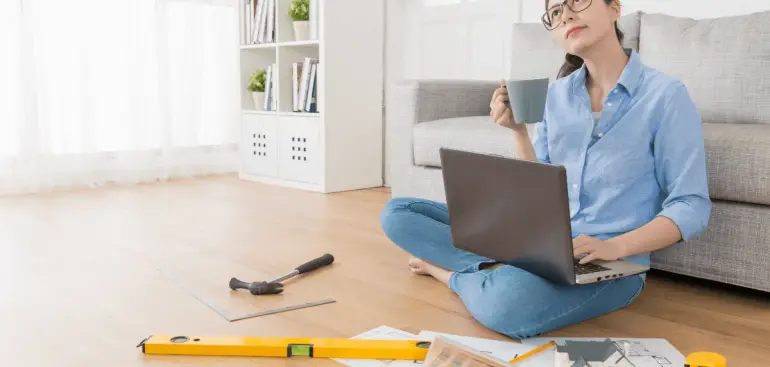Have you been thinking about updating or upgrading your home with a home equity loan, cash-out refinance, or home equity line of credit (HELOC)? Every year, Remodeling Magazine conducts a survey of home remodeling projects that keep track of which home improvements can earn back your investment when it comes time to sell your home. While resale value isn’t the only reason you could want to upgrade your home’s appearance or amenities, before you sign your loan documents and get started with your remodeling project, you should probably know the types of projects that do add value and be aware of the ones that don’t.
Which home improvements add the most to resale value?
According to Remodeling Magazine’s 2019 survey of home improvement projects, the average cost of a project was $63.4 thousand, and the average return-on-investment (ROI) was $37.5 thousand for a 66.1% cost/value ratio. This comparison includes nearly every type of remodeling project you could think of, from the master bedroom suite room additions to bathroom and kitchen remodels.
None of the home remodeling projects surveyed have a 100% or greater return on investment, but the top improvement in 2018 and 2019 was an upscale garage door replacement. At an average cost of $3,611, the improved garage door returned over 97% at resale ($3,510). Replacing doors, windows, and entryways all averaged between 70% and 76% ROI.
A wood deck addition returned over 75% of its cost at resale, but composite decks: not so much. At an average cost of almost $20,000, they returned only about $13,200.
If you’re thinking about doing your kitchen over, it’s worth considering the scale you’re willing to invest in. Major kitchen remodels costing over $130,000 returned less than 60% of their investment, while minor kitchen remodeling projects of about $22,000 came the closest to paying for themselves, at an 80.5% ROI.
You may be doing some remodeling projects for yourself, and your enjoyment of your home should always come first. Over the years and in general, home improvement projects that add more to the value of your home tend to fall in the “curb appeal” category, like landscaping, entry doors, window replacements, and new, upgraded garage doors.
With home mortgage refinances rates expected to remain low for 2020, this year could be the time for you to consider making changes to your home. A mortgage loan and refinance professional can help you to find the right loan product to pay for your remodeling project.
Sources
https://www.remodeling.hw.net/cost-vs-value/2019/key-trends-in-the-2019-cost-vs-value-report
Ready to Remodel? These Home Renovations Will Pay Off the Most (and the Least) in 2019



